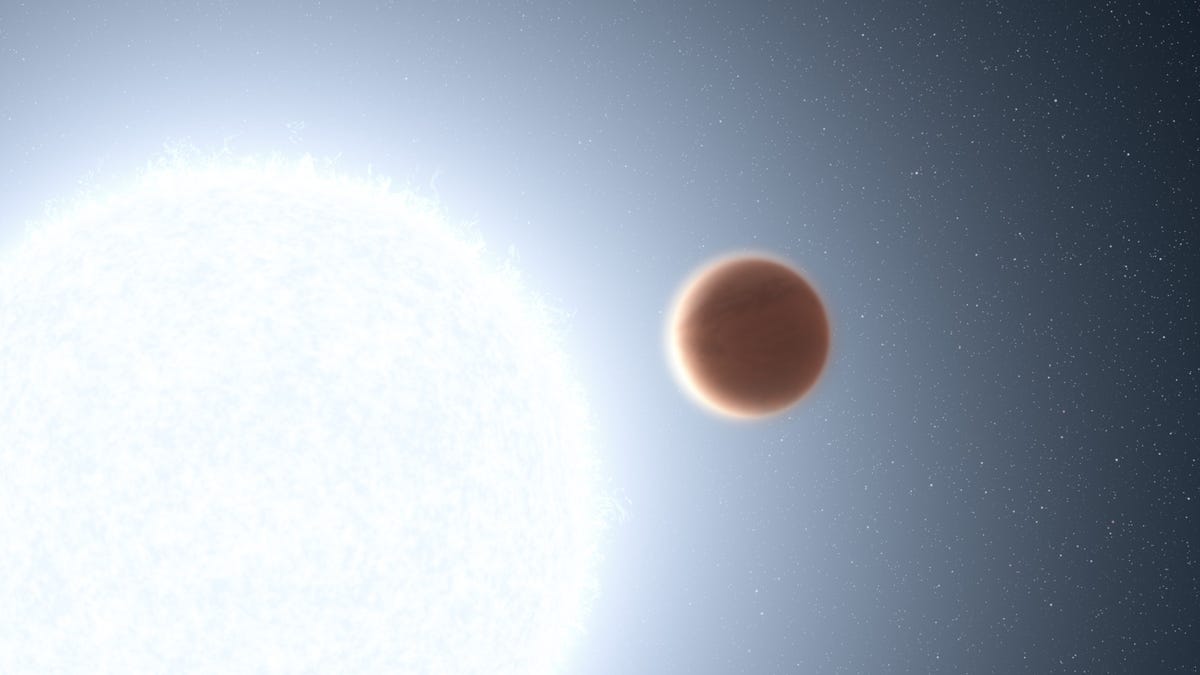NASA: 'Bloated Jupiter-Sized Worlds' Have Hottest Planetary Atmospheres Seen Yet
The Hubble Space Telescope spots face-melting hot weather on the planets.
Mars sure looks like a friendly place to visit when you compare it with other planets out there, like the thoroughly unpleasant exoplanets WASP-178b and KELT-20b. The "bloated Jupiter-sized worlds," as NASA calls them, are located outside of our solar system. The planets are the subject of two papers investigating their extreme weather.
The exoplanets would melt your face off faster than a Metallica guitar solo, and they can also vaporize most metals. So even if we miraculously invent a way to travel the many light-years to reach them (1,300 for WASP-178b and 400 for KELT-20b), let's agree not to visit.
In a statement on Wednesday, NASA said the distant worlds "have the hottest planetary atmospheres ever seen." They're snuggled up close to their stars, which triggers some wild weather. WASP-178b is locked in place with one side always facing its star and it has an atmosphere that whips around at super-hurricane speeds. "On the dark side, the silicon monoxide may cool enough to condense into rock that rains out of clouds, but even at dawn and dusk, the planet is hot enough to vaporize rock," NASA said.
Astronomers used data from the Hubble Space Telescope and NASA's Spitzer Space Telescope to better understand what's happening on the planets. "We still don't have a good understanding of weather in different planetary environments," said David Sing of Johns Hopkins University. Sing is a co-author of both the study on WASP-178b published in the journal Nature on Wednesday and the study on KELT-20b published in Astrophysical Journal Letters in January.
Researchers aren't scoping out these planets as the kind of places people could live. They're extremely uninhabitable. But studying them will help scientists understand what's going on with weather on friendlier planets. "This is a test of our techniques that allows us to build a general understanding of physical properties such as cloud formation and atmospheric structure," said Utah Valley University's Josh Lothringer, an author on both studies.
The raging hot planets are among more than 5,000 exoplanets scientists have discovered. They highlight the diversity of the planet scene beyond our solar system, and also show how much can be learned about them from our space telescopes. We can marvel at these super-hot Jupiters from a safe distance.


